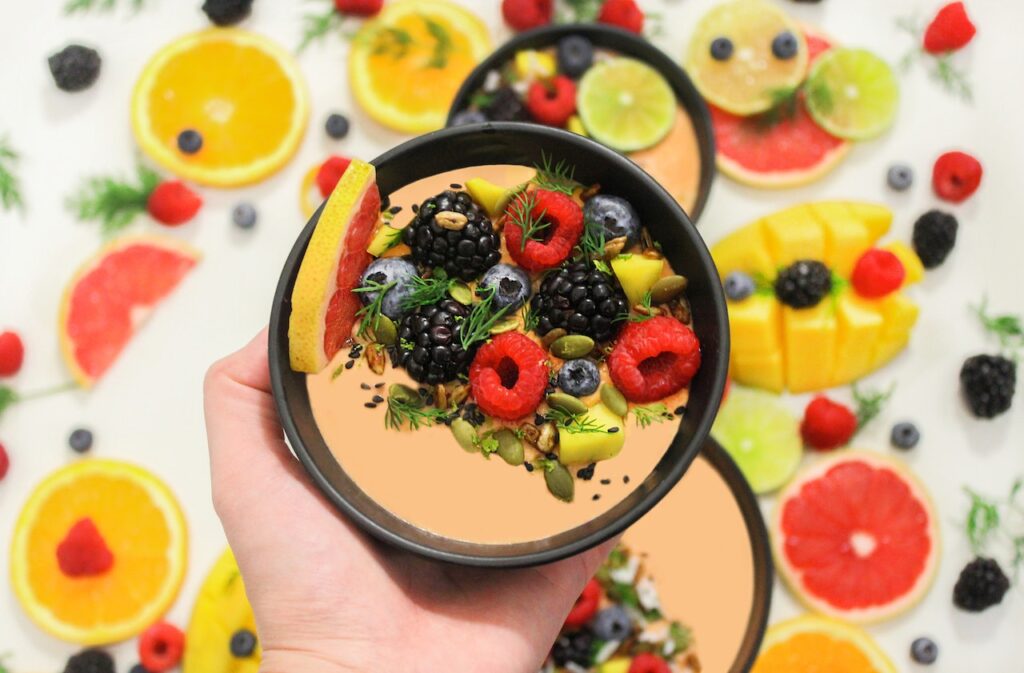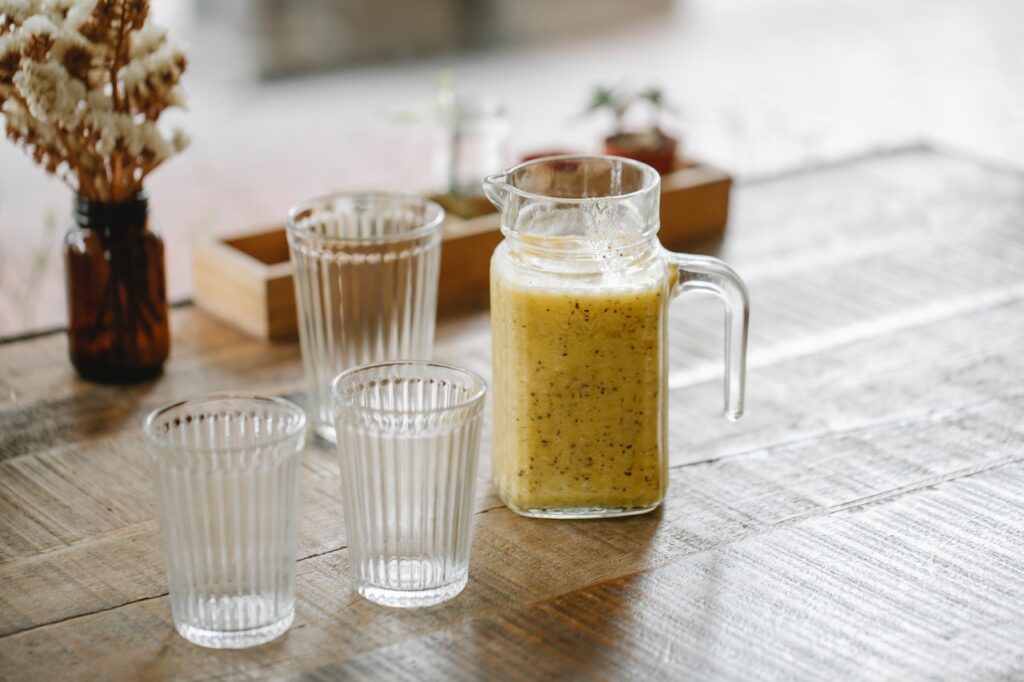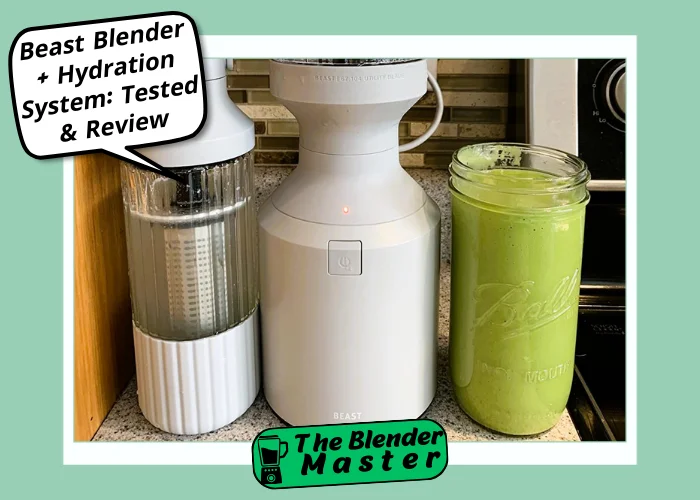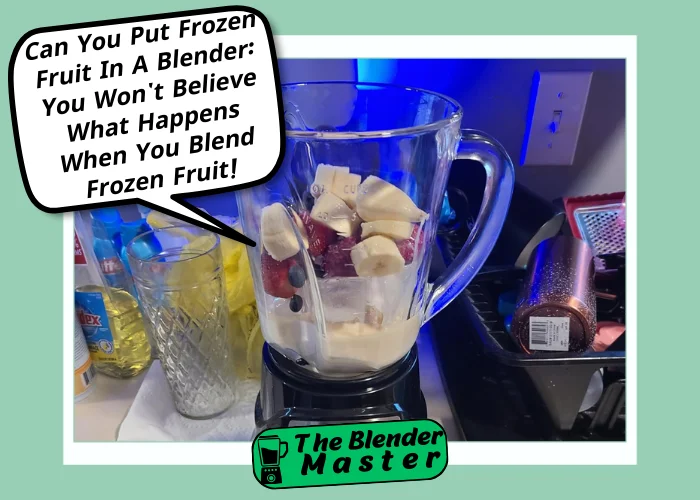Short Answer:
Blending fruit does not destroy nutrients or fiber in any meaningful way. However, blending does break the fibers into smaller pieces, which will affect how they move through your digestive system.
Some types of fibers, when chopped into bits, may disperse more quickly within your gut and slow digestion and absorption, while others might lose some of the “roughage” effect that keeps things moving in your digestive tract and prevents constipation.
Have you ever wondered if blending destroys fiber and nutrients? Let’s uncover the truth behind this common myth in the world of nutrition. Many people believe that blending fruits breaks down their fiber and nutrients, making it less beneficial for our bodies.
But is this really the case? Join us as we dive into science and discover what really happens when fiber meets the blender. Get ready for some surprising insights that challenge what we thought we knew about blending and its impact on our health. Let’s explore the facts and find out if blending is a friend or foe to fiber!

What is Fiber in Fruit?
Before we delve into the truth about blending and its impact on fiber, let’s first understand what fiber is and why it’s essential for our health.
Fiber is a type of carbohydrate found in plant-based foods, such as fruits, vegetables, whole grains, legumes, and nuts. Unlike other carbohydrates that are broken down and absorbed by our bodies, fiber remains largely intact as it passes through our digestive system.
There are two main types of dietary fiber: soluble fiber and insoluble fiber.
- Soluble Fiber: This type of fiber dissolves in water and forms a gel-like substance in our digestive tract. It can be found in foods like oats, beans, apples, and citrus fruits. Soluble fiber is known for its ability to lower cholesterol levels, stabilize blood sugar levels, and support heart health.
- Insoluble Fiber: Insoluble fiber does not dissolve in water and adds bulk to our stool. It can be found in foods like whole wheat, brown rice, leafy greens, and carrots. Insoluble fiber promotes regular bowel movements and helps prevent constipation.
Both types of fiber are crucial for maintaining a healthy digestive system and supporting overall well-being. Additionally, a high-fiber diet is linked to various health benefits, including reduced risk of heart disease, stroke, and certain types of cancer.
Now that we have a better understanding of what fiber is and its significance, let’s explore whether blending affects the nutritional properties of this essential dietary component. Is the myth about blending and fiber truly debunked, or does it hold some truth after all? Let’s find out!

Does Blending Reduce or Destroy Fiber Content?
The question of whether blending reduces or destroys fiber content has been a subject of debate and misconception for some time. Let’s shed some light on this topic and get to the bottom of the matter.
Blending involves processing whole fruits and vegetables into a smooth and drinkable consistency. During this process, the physical structure of the food is broken down, leading to concerns that the fiber might be compromised or lost.
The truth is, that while blending may alter the physical appearance of the fiber, it does not destroy its nutritional value entirely. Both soluble and insoluble fiber remain present in the blended mixture, retaining many of their health benefits.
I present to you several studies that will undoubtedly convince you of the undeniable truth: https://www.ncbi.nlm.nih.gov/pmc/articles/PMC5678208/
FURTHER READING: Can Your Blender Handle Frozen Fruit?
Science Behind Blending Fiber Food
The science behind blending fiber-rich foods offers valuable insights into how this food preparation method affects the nutritional properties of fiber. Let’s explore the key factors that shed light on the impact of blending on fiber content and its health benefits:
- Physical Structure: Fiber is a complex carbohydrate with a unique physical structure. In whole fruits and vegetables, fiber exists within the cell walls, which can be tough and difficult for our bodies to break down during digestion. Blending ruptures these cell walls, breaking the fiber into smaller particles, but the actual fiber content remains largely intact.
- Accessibility: Blending enhances the accessibility of fiber. By breaking down the cell walls, it makes the nutrients, including fiber, more readily available for our digestive system to absorb. This accessibility can be particularly beneficial for those who have difficulty chewing or digesting certain fibrous foods.
- Soluble Fiber: Blending is especially effective in releasing soluble fiber from fruits and vegetables. Soluble fiber dissolves in water and forms a gel-like substance in the digestive tract, providing various health benefits, including supporting heart health and stabilizing blood sugar levels. Blending helps release more soluble fiber, making it easier for our bodies to benefit from its positive effects.
- Insoluble Fiber: While blending may reduce the size of insoluble fiber particles, the overall amount remains relatively unchanged. Insoluble fiber adds bulk to our stool, promoting regular bowel movements and preventing constipation. Even after blending, this essential function of insoluble fiber remains intact.
- Gut Health: Blending can positively influence gut health. The soluble fiber released during blending acts as a prebiotic, promoting the growth of beneficial gut bacteria. A healthy gut microbiome is crucial for proper digestion and overall well-being.
- Nutrient Retention: Blending preserves the essential nutrients present in fruits and vegetables, including vitamins, minerals, and antioxidants. By consuming blended fiber-rich foods, we retain the full spectrum of nutritional benefits these foods offer. Here is a study that provides clear insights on this matter: https://fruitsandveggies.org/expert-advice/nutrients-lost-oxidation-fruits-vegetables-blended/
Summary
In summary, the science behind blending fiber-rich foods demonstrates that while the physical structure of fiber may change, the nutritional benefits remain substantial. Blending increases accessibility enhances digestibility, and promotes gut health by releasing more soluble fiber.
As a convenient and effective way to incorporate fiber into our diets, blending can play a valuable role in supporting overall health.
However, it’s essential to complement blended options with a diverse intake of whole fruits, vegetables, and fiber-rich foods to ensure we get the most out of this vital dietary component.

Does blending destroy Fruit nutrients?
Well, not really. Let’s break it down.
While blending does break down the fruit into smaller bits, those nutrients are still hanging around. They might not be as loud and proud as they were, but they’re there, hiding in plain sight.
Now, here’s a little twist. When you blend your fruits, you might be more likely to drink it faster than, say, chewing through a whole apple. That means the good stuff can hit your system quicker, which can be a win.
However, there is a catch. The fiber in whole fruits can help slow down the sugar rush in your body, which is a good thing. When you blend it, you might get a bit more sugar in a hurry. So, balance is key, my friends.
In summary, blending your fruits won’t make the nutrients disappear, but it might make them easier to access. Just remember to mix it up with some whole fruits now and then to keep things interesting for your body.
So, don’t be afraid to rock that blender and enjoy your fruity creations. Your taste buds and body will thank you for it!
Nutritional Value of Blended Foods
Blended foods, especially those rich in fiber, offer a wealth of nutritional benefits, thanks to the unique science behind blending. Let’s delve into the nutritional value of blended foods, focusing on how this food preparation method enhances nutrient absorption and supports overall health:
- Increased Fiber Intake: Blended foods retain their fiber content, both soluble and insoluble, which is crucial for a healthy digestive system. The accessibility of fiber is improved through blending, making it easier for our bodies to absorb and utilize this essential nutrient. Adequate fiber intake aids in digestion prevents constipation and supports heart health.
- Rich in Vitamins and Minerals: Blending preserves the vitamins and minerals present in fruits and vegetables, ensuring that we benefit from the full spectrum of these essential nutrients. Vitamin C, potassium, folate, and other vital micronutrients are readily available in blended foods, contributing to a well-rounded and nourishing diet.
- Antioxidant Boost: Many fruits and vegetables are rich in antioxidants, which help combat oxidative stress and inflammation in the body. Blending releases these antioxidants, making them more bioavailable and supporting our cells’ defense against harmful free radicals.
- Hydration: Blended foods often have a higher water content, providing an excellent source of hydration. Water-rich fruits and vegetables, when blended, offer a refreshing and nutritious way to stay hydrated throughout the day.
- Enhanced Nutrient Absorption: Blending breaks down the cell walls of fruits and vegetables, making their nutrients more accessible to our bodies. The process of pre-digestion that occurs during blending can enhance nutrient absorption, ensuring that we get the most out of the foods we consume.
- Weight Management: Blended foods, such as smoothies with a good balance of nutrients, can be a filling and satisfying option. They may help with weight management by curbing hunger and reducing the likelihood of unhealthy snacking.
- Quick and Convenient: Blending allows for a quick and convenient way to consume a variety of fruits, vegetables, and other nutritious ingredients in one go. This can be particularly helpful for busy individuals who may struggle to prepare and eat whole meals.
However, it’s essential to strike a balance between blended foods and whole foods. While blending can offer numerous benefits, whole fruits and vegetables provide additional benefits, such as promoting chewing, which aids in satiety and digestive health.
Here are some study or research about blended food Nutritional Value:
- https://answers.childrenshospital.org/study-shows-benefits-of-blended-diets/
- https://www.sciencedirect.com/topics/agricultural-and-biological-sciences/blended-food
FAQ
Do you still get fiber from smoothies?
Yes, you can still get fiber from smoothies, depending on the ingredients used. Fruits, vegetables, and other high-fiber ingredients blended into a smoothie retain their fiber content. However, it’s essential to use whole fruits and vegetables (with the skin and pulp) rather than strained juices to ensure you’re getting the full fiber benefits.
Does blending oats destroy fibre?
Blending oats does not destroy fiber. When you blend oats into a smoothie or use them in other recipes, the fiber remains intact. However, blending oats may break them down into smaller particles, which could lead to a smoother texture in your food or drink.
Does blending food destroy nutrients?
Blending food can potentially cause some nutrient loss due to increased exposure to oxygen and heat generated during blending. However, the overall impact on nutrient loss is generally not significant. Blending can actually make nutrients more accessible and easier to absorb by breaking down cell walls in fruits and vegetables.
Is blending food bad for digestion?
Blending food can be beneficial for digestion. Blending breaks down the food into smaller particles, making it easier for your digestive system to process and absorb nutrients. Additionally, some people with certain digestive issues find blended or pureed foods easier to tolerate.
Do fruits become unhealthy when blended?
Blending fruits does not make them unhealthy. Fruits are a rich source of vitamins, minerals, and antioxidants, and blending them can create delicious and nutritious smoothies. However, it’s important to be mindful of added sugars or sweeteners that may be included in some smoothie recipes, as excessive sugar intake can be detrimental to health if not balanced with other nutrients.
Final Verdict: Blending Fruit Does Not Destroy Fiber & Nutrients
Finally, It is clear that, Blending does not destroy fiber & nutrients. The process of blending fruits, vegetables, or oats into a smoothie or other blended food does not break down the fiber present in these ingredients. The fiber content remains intact, and you can still get the benefits of fiber when consuming blended foods.
However, it’s essential to note that the texture of the blended food might change, and the fiber may be broken down into smaller particles, resulting in a smoother consistency. While this doesn’t affect the fiber’s nutritional value, it may alter the eating experience.
To maximize the fiber content of blended foods, it’s advisable to use whole fruits and vegetables, including their skins and pulp, rather than using strained juices or removing fibrous parts.
As with any nutritional topic, research and knowledge in the field of nutrition may continue to evolve, so it’s a good idea to stay updated with the latest findings and consult with qualified healthcare professionals or dietitians for the most accurate and current information tailored to your specific health needs.




Leave a Reply